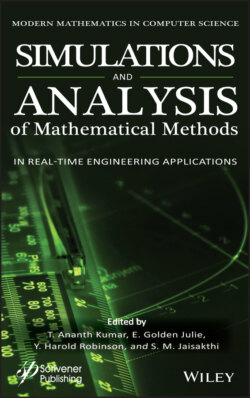Читать книгу Simulation and Analysis of Mathematical Methods in Real-Time Engineering Applications - Группа авторов - Страница 25
1.3.1 SEIR Model (Susceptible-Exposed-Infectious-Removed)
ОглавлениеTo estimate the infected numbers, the traditional Susceptible-Exposed-Infected-Recovered (SEIR) model is used. Viruses or bacteria are the cause of infectious diseases such as rubella, mumps, measles and pertussis. The transmission of these diseases requires a time of incubation. The incubation period is a period in which clinical signs are displayed by people who have started being attacked by viruses or bacteria but have not been able to spread the disease. The Susceptible-Exposed-Infected-Recovery (SEIR) model can reflect the spread of illness by observing the incubation time. Immigration has an effect on the spread of illness. This is caused by refugees who may bring the disease from their regions to other countries. For this reason, the immigration SEIR model should be considered. We will define the SEIR model with immigration here, decide an equilibrium point and state the stability of the equilibrium. The model is then extended to the illness of herpes [13].
In analysing the spread and control of infectious diseases, mathematical models have become valuable tools. Most research on outbreak models also involves the disease’s persistence and extinction. In mathematical epidemiology, the majority of models are compartments. For diseases with a longer incubation period, a population is divided into prone, exposed, infectious, and recovered compartments in some traditional research studies; the model is then called the SEIR model. Figure 1.6 shows data representation at different point of contact.
Figure 1.7 is about SIR model. The model consists of three comparments:
Figure 1.6 Exposed, infection and recovery transmission in SEIR model. (a) Any susceptible can be exposed by rate of per contact point. (b) Infection occurs at rate per contact and (c) recovery occurs at rate for infected population.
Figure 1.7 SIR model.
S: The number of susceptible individuals. When a susceptible and an infectious individual come into “infectious contact”, the susceptible individual contracts the disease and transitions to the infectious compartment.
I: The number of infectious individuals. These are individuals who have been infected and are capable of infecting susceptible individuals.
R: The number of removed (and immune) or deceased individuals. These are individuals who have been infected and have either recovered from the disease and entered the removed compartment, or died. It is assumed that the number of deaths is negligible with respect to the total population. This compartment may also be called “recovered” or “resistant”.
